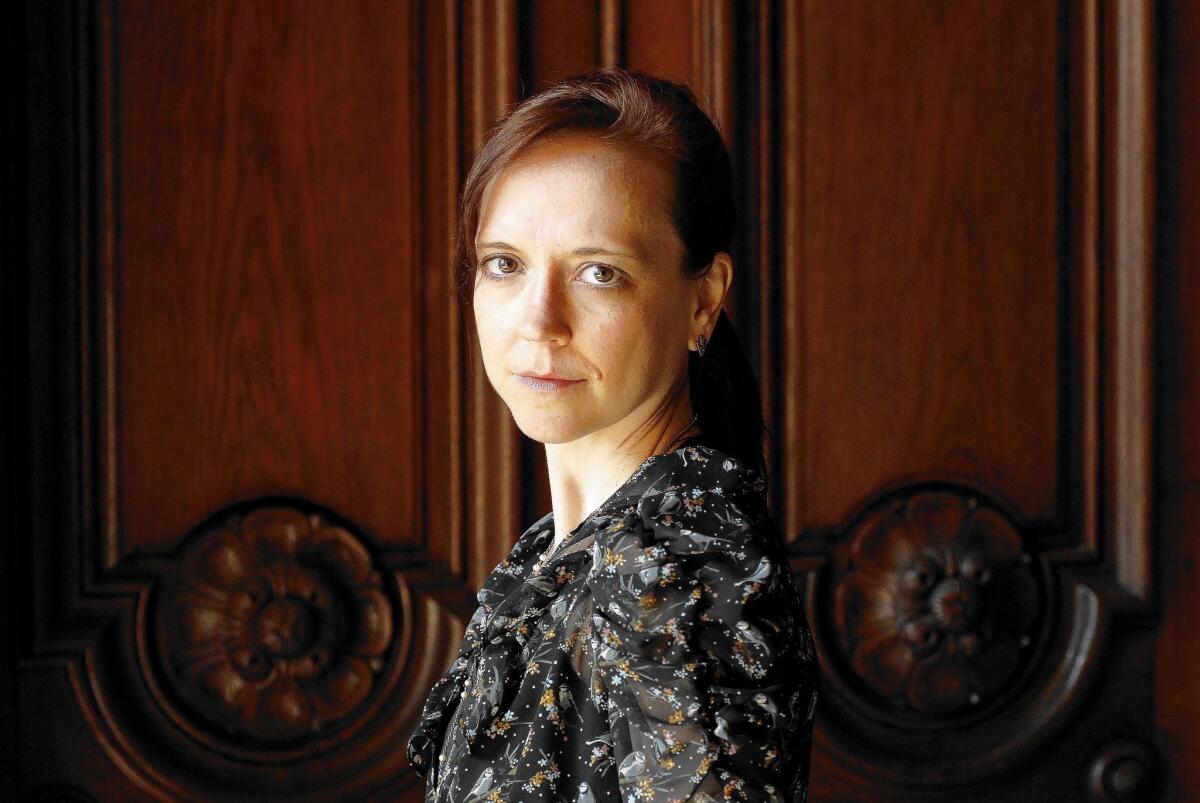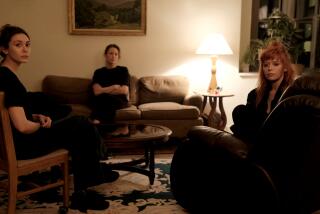Review: In Megan Abbott’s ‘The Fever,’ teen girls’ panic is contagious

Teen girls are treated with a surprising amount of dismissal and contempt, considering how many of us have been them at one time or another. It’s widely understood that to compare a grown person to a teenage girl is an insult with specific connotations of pettiness and drama. Writers of Serious Literature like to focus on adulterous men, or if youth is necessary, precocious boys. But the upheavals of teen girlhood are rich with material: Friends drift apart, create new alliances; illusions are shattered and innocence lost.
Megan Abbott has been mining these fields with attention and vigor, in “The End of Everything” (2011), “Dare Me” (2012), and now, with her new novel, “The Fever.” She understands what many writers don’t — that these things are important and interesting; that they can even be deadly.
The Nash family lives in the foggy town of Dryden, an ordinary place carrying the volatile dramatic potential of an ordinary population of teenagers. The Nashes’ lives are anchored in Dryden High School, where divorced father Tom is a popular teacher, and Eli, 18, and Deenie, 16, are students in the fitful, hormonal thick of their adolescent lives. When a mysterious illness strikes the teen girls of Dryden, the town and its inhabitants are thrown into a chaos that reveals the essential instability in their daily lives.
The point of view shifts among the three Nashes, but while Tom and Eli provide insightful perspectives that enrich the story and advance the plot, Deenie is the focal point of the novel.
“The Fever” is about the world of girls, a charged, eerie sphere that Abbott nails at every turn. Deenie has two best friends — Lise is her companion from childhood, a sweet, lovely girl whose newfound beauty has caught everyone by surprise; Gabby is a complicated girl from a troubled family who carries “the glamour of experience, like a dark queen with a bloody train trailing behind her.”
One morning, Lise collapses in a classroom, her face and body distorted by seizure. She recovers her wits long enough to talk to Deenie (“Are they laughing at me?”) before falling into a state of unconsciousness that everyone hopes is temporary. The school descends into a speculative, terrified panic, with several students traumatized after witnessing her fall.
Things go only downhill when Gabby suffers a similar attack during an all-school orchestral performance, and over the next several days, the fever spreads across campus, infecting girl after girl with a wide range of scary symptoms. As the hospital swells with young female patients, students, parents and teachers search for answers with rising hysteria. Afflicted girls upload creepy YouTube statements that go viral, and the Dryden illness attracts the attention of the media as well as of various shadowy investigative agencies.
The novel is built around this crucial, confounding question: What the hell is happening to these girls? Is it the scummy green lake? The controversial HPV vaccine? Or is it all in their angsty little heads? After a grueling PTA meeting, a mother says to Tom, “[E]ven if it isn’t any of these things, it could be. Because all we do from the minute they’re born is put them at risk.”
This is not just the hyperbole of concerned parenthood — Abbott, at least, paints growing up as a perilous process, haunted by the inevitable, frightening transition into sexual maturity. These girls are twitching with desire, and while their bodies are assaulted by this strange illness, they follow their hormones with an impulsive abandon that suggests an analogous loss of control. Though no one suggests that sex is making the girls sick directly, all of the speculation seems to dance around the subject. The lake where the girls take a swim, drawn in by the promise of shirtless boys; the HPV vaccination, designed to inoculate young girls against the threat of adult disease. Suspicions arise about Tampax and birth control, and the investigation lingers on a certain encounter behind the school bushes, where a pair of discarded pink tights serves as a poignant clue.
And everyone, including Deenie, who spends the eve of Lise’s seizure in the back of her co-worker’s car, seems to be turning in V-cards. “Sometimes it seemed to Deenie that high school was like a long game of And Then There Were None” — there it is, then, the classic alignment of sex and death.
As the drama unfolds, Deenie is forced to deal with a full range of teen girl problems that stretch into every arena of her life. With Lise in the hospital, she becomes increasingly insecure about Gabby’s close friendship with the witchy, waifish Skye. She deals with survivors’ guilt, in addition to guilt over a small cluster of kept secrets and betrayals. These dramas intertwine with the unnatural havoc of the titular fever, and they force Deenie into a violent, heartbreaking coming of age.
The plot takes dark, scary turns that arise from the everyday turmoil of female adolescence. That these all feel terrifyingly plausible can be attributed to Abbott’s masterful writing. Once again, she demonstrates an uncanny ear for the voice of youth, breathing life into every whispered confession, even every mashed-out text. She’s a unique talent with a signature style that gets stronger with every book. With its confident plotting and lyrical prose, “The Fever” may be her best novel yet.
Cha is the author of “Follow Her Home” and the forthcoming “Beware Beware.”
The Fever
A novel
Megan Abbott
Little, Brown: 320 pp., $26
More to Read
Sign up for our Book Club newsletter
Get the latest news, events and more from the Los Angeles Times Book Club, and help us get L.A. reading and talking.
You may occasionally receive promotional content from the Los Angeles Times.









